Build-A-Rig Round 2: SilverStone and Crucial Interviews and $800 Back-To-School PCs
by Ian Cutress on October 13, 2015 8:00 AM EST- Posted in
- Build-A-Rig
- Crucial
- SilverStone
- Interview
SilverStone’s ‘Mighty Milo’
Tony was first up to the plate with his build. The choice of the overclockable Pentium combined with the GTX 960 makes it more of a gaming focused system, reinforced by the portable aspects of the case but perhaps limited by the smaller SSD. This build is more focused on portability though, with the expectation that the underlying motherboard and power supply can remain constant over the course of a degree with minor upgrades in time.
| SilverStone's Mighty Milo | |||
| Component | Selection | Price as Chosen |
90-Day Average |
| Processor (CPU) | Intel Pentium G3258 (2C/2T, 3.2 GHz) |
$69.99 | $69.99 |
| Motherboard | ASRock H97M-ITX/ac | $95.99 | $93.20 |
| Graphics Cards (GPU) | Zotac GeForce GTX 960 OC | $179.99 | $179.99 |
| Memory (DRAM) | Crucial Ballistix Sport XT (2x4GB) DDR3-1600 C9 |
$39.99 | $43.95 |
| Storage (SSD) | Crucial BX100 120GB | $69.99 | $67.75 |
| Storage (HDD) | 1TB Western Digital Blue 2.5-in 5400 RPM 8MB Cache |
$60.99 | $60.99 |
| Power Supply (PSU) | SilverStone ST45SF 450W Bronze SFF |
$69.99 | $71.33 |
| Chassis | SilverStone Milo ML08B-H (with handle) |
$84.99 | $84.99 |
| CPU Cooling | SilverStone Argon AR06 | $39.99 | $39.99 |
| Operating System | Microsoft Windows 10 Home 64-bit OEM |
$99.99 | $99.99 |
| Extras | None | ||
| Total | $811.90 | $812.17 | |
Processor (CPU) – Intel Pentium G3258 ($70)
The G3258 is the anomaly in Intel’s product line, released last year as an ‘overclockable anniversary edition’ celebrating 20+ years of the Pentium line. We reviewed it when it was released, and Intel’s goal here was in part to reinvigorate overclocking but also provide a high-frequency lower end part. Intel were cautious however, as due to the dual core with no HyperThreading (which is a Core i3), the G3258 even overclocked can get bogged down when high compute power is needed, even when it hits 4.2 GHz and above. That being said, at $70 it comes in around 50% cheaper than the nearest i3, and still has a high frequency to provide a good responsiveness in single threaded tasks.
Motherboard – ASRock H97M-ITX/ac ($96)
Small form factor motherboards have a tough time to retain all the features of the full sized variants and still be cost effective – sometimes engineering it all into a smaller space takes time and research. As a result we usually see mITX motherboards a little stunted, with fewer DRAM slots, PCIe slots and/or SATA ports as a result. Each generation still comes with a healthy array of $80-$150 boards in this size, and the ASRock H97M-ITX/ac is no different. This one comes with 802.11ac 2x2 WiFi, allowing for more mobility around a dorm room, power connectors in the right places to make it easier to build as well as a trio of options for video output and USB 3.0. The H97 chipset is a little oddball here, wherein it should allow CPU overclocking, and it will be interesting to see how far this four-phase motherboard can push the G3258.
Graphics Cards – Zotac GeForce GTX 960 OC 2GB ($180)
When using a Pentium class processor, gaming is very limited beyond support for various APIs, acceleration tools, or basement settings for eSports/indie titles. Tony added in a GTX 960 for good measure, going for Zotac’s pre-overclocked model for an extra kick. This is still a middle class GPU for 1080p gaming, but should raise the bar to near maximum settings on popular LAN titles such as CS:Go and allow a foray into some high profile games. The extra money that was ‘saved’ by staying at a Pentium means that this GPU gets another $30-40 on it.
Memory – Crucial Ballistix Sport 8GB (2x4GB) DDR3-1600 C9 ($40)
With an $800 budget, there’s little room to splash for high capacity or high speed memory, but given the type of system being built most users can agree that 8GB is a rough sweet spot. Back when we tested DRAM scaling on Haswell processors, we found that there can be some pitfalls when choosing memory but Tony has kept abreast by at choosing DDR3-1600 at a CAS Latency of 9, moving it out of the danger curve.
Storage – Crucial BX100 120GB ($70)
A system of $800 makes a nice entry point into having an SSD drive as the operating system drive, but is perhaps not enough budget to make it go all-out and will require some extra storage, especially for assignments and games. A 120GB drive will sort out Windows 10 and a couple of big software/game packages, and as NAND prices decrease over the next few years there might be space to upgrade to something larger. The BX100 series in the meantime was well received in our review.
Storage – Western Digital Blue 2.5-inch 1TB 5400 RPM 8MB Cache ($61)
For roughly the same price as the 120GB SSD, a 1TB drive is also put into this system as that bulk storage component. The WD Blue brand is specifically designed for desktop PCs, and should be eminently suitable for a back-to-school build with WD's reputation. That being said, this model has a slower rotation speed and cache than we expected, but comes in a 2.5-inch form factor.
Power Supply – SilverStone ST45SF 450W Bronze Power Supply ($70)
One of SilverStone’s well known product lines revolve around small form factor power supplies. I even have a couple as part of my mini-ITX builds, just because they often just fit in and work (personal opinion). For the Milo case being used, having an SFF power supply is a must, and this single rail design comes with three SATA power connectors, two 6-pin PCIe and a 6+2-pin PCIe connector for graphics. As mentioned in his interview, Tony stated that this product has been rigorously tested with larger graphics cards, and in a system this size it might be very difficult to get above the 400W mark with any combination of components anyway.
Chassis – SilverStone Milo ML08B-H with handle ($85)
One of the key components to this build is the chassis. The Milo is a new design from SilverStone, only recently being released. The focus here is on small form factor and mobility, so with that handle it comes across as well suited for a back-to-school system where the dorm has to be vacated every semester or if the user needs to move their system to events. With the $800 budget it was perhaps a bit too much to ask for something similar in say aluminum, but it will be interesting to see how easy it is to build a system inside and carry around with all the components.
CPU Cooling – SilverStone Argon AR06 ($40)
As Tony chose an overclockable processor and a suitable motherboard, it makes sense that there needs to be sufficient cooling for an overclock. SilverStone’s AR06 cooler, according to Tony, is good for 80-90W of cooling which is above the 53W TDP listed for the G3258 processor. This means there should be some headroom, as long as the chassis can ventilate it. The cooler is also specially designed for mini-ITX form factor chassis such as the ML08B.
Operating System – Microsoft Windows 10 Home 64-bit OEM ($100)
Windows 10 would presumably be the obvious choice here, given the soon-to-be relevance of DX12 as well as features such as Cortana and the return of a proper start menu.
Overall Build
| SilverStone's Mighty Milo | |||
| Component | Selection | Price as Chosen |
90-Day Average |
| Processor (CPU) | Intel Pentium G3258 (2C/2T, 3.2 GHz) |
$69.99 | $69.99 |
| Motherboard | ASRock H97M-ITX/ac | $95.99 | $93.20 |
| Graphics Cards (GPU) | Zotac GeForce GTX 960 OC | $179.99 | $179.99 |
| Memory (DRAM) | Crucial Ballistix Sport XT (2x4GB) DDR3-1600 C9 |
$39.99 | $43.95 |
| Storage (SSD) | Crucial BX100 120GB | $69.99 | $67.75 |
| Storage (HDD) | 1TB Western Digital Blue 2.5-in 5400 RPM 8MB Cache |
$60.99 | $60.99 |
| Power Supply (PSU) | SilverStone ST45SF 450W Bronze SFF |
$69.99 | $71.33 |
| Chassis | SilverStone Milo ML08B-H (with handle) |
$84.99 | $84.99 |
| CPU Cooling | SilverStone Argon AR06 | $39.99 | $39.99 |
| Operating System | Microsoft Windows 10 Home 64-bit OEM |
$99.99 | $99.99 |
| Extras | None | ||
| Total | $811.90 | $812.17 | |
Back-to-school systems have to come in a variety of shapes and forms. The system that a film studies student needs is different to what a computer science or an engineer might need, with varying degrees of DRAM and storage eating software on both sides, and the desire to have sufficient computing power to push through a render or a compile while still having a decent system to play some games. $800 is a reasonable sized budget for this, and the SilverStone build focuses on both portability and gaming, with a potential nod to high-single thread performance. With Skylake still being a little difficult to get hold of, a Haswell based system should still provide a good set of numbers for a few years, or easily be upgraded to an i5 or i7 when that next student loan check arrives. As many students through the years have proven, you can survive through school on cheap ramen and free anime.


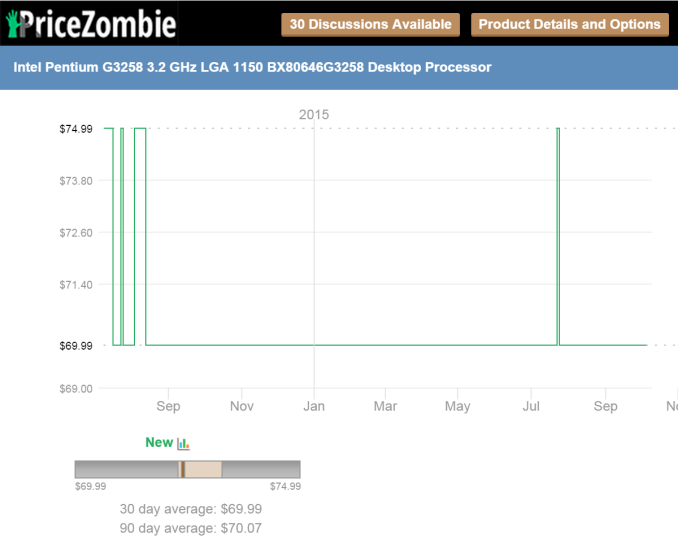
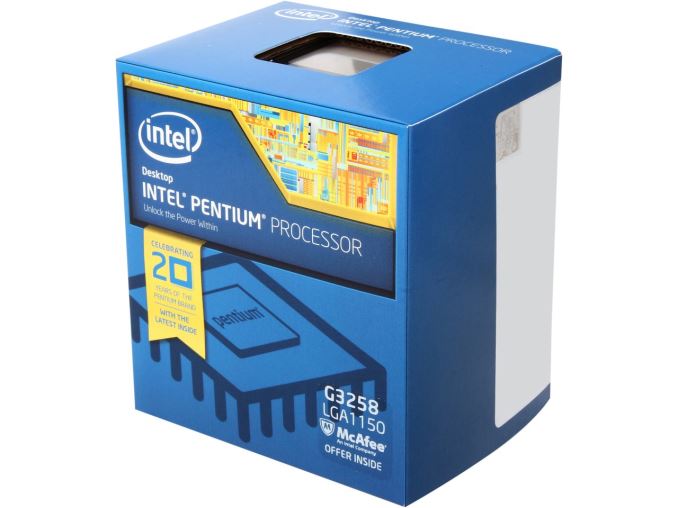
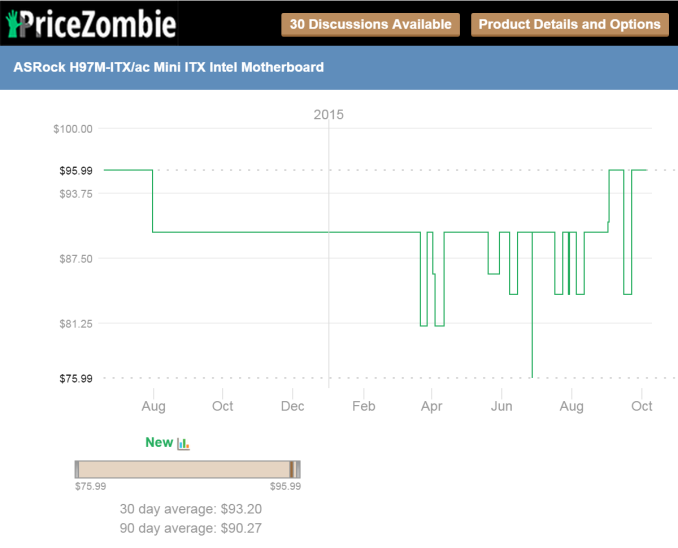
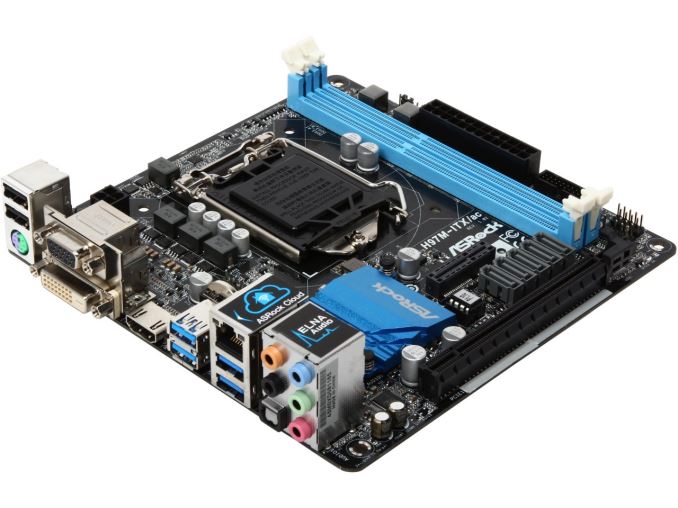

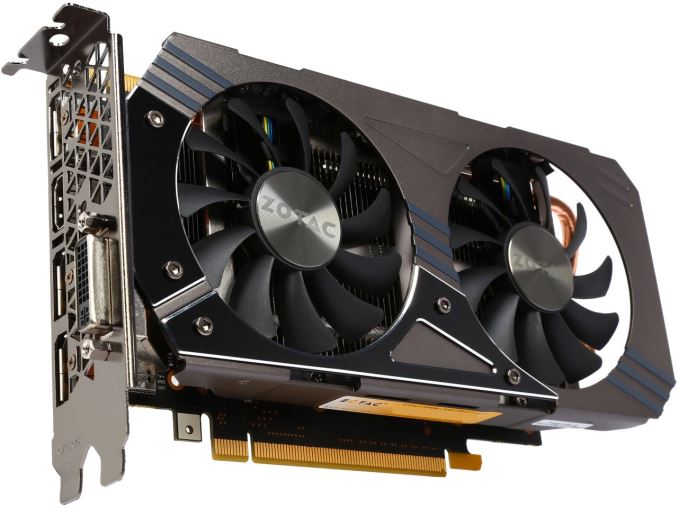
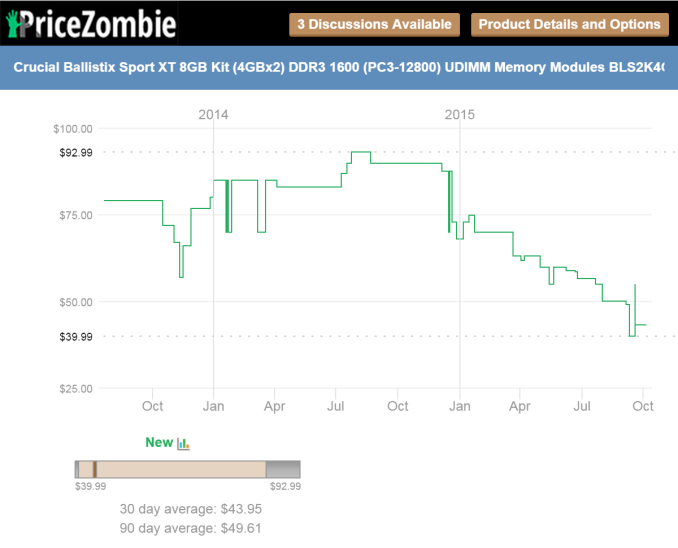
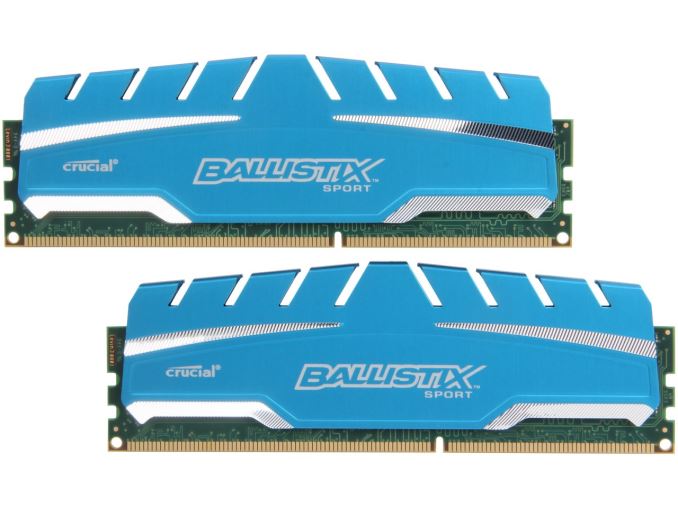
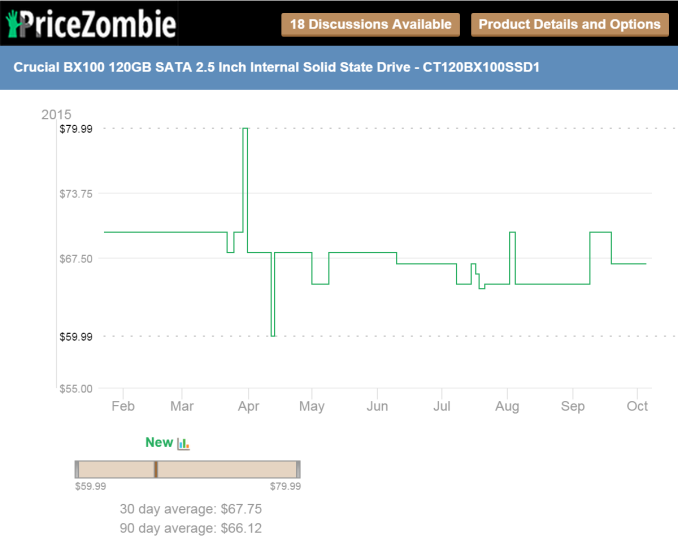
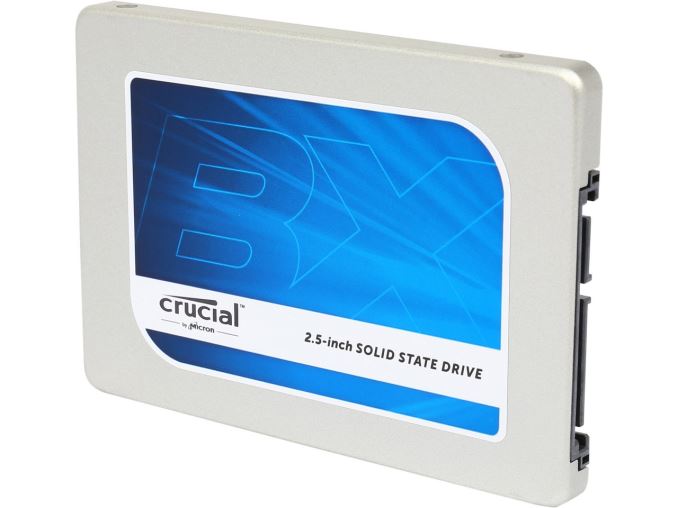

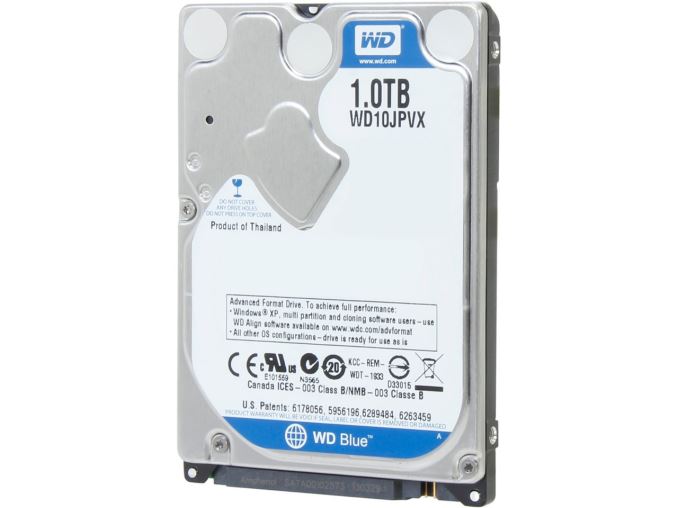
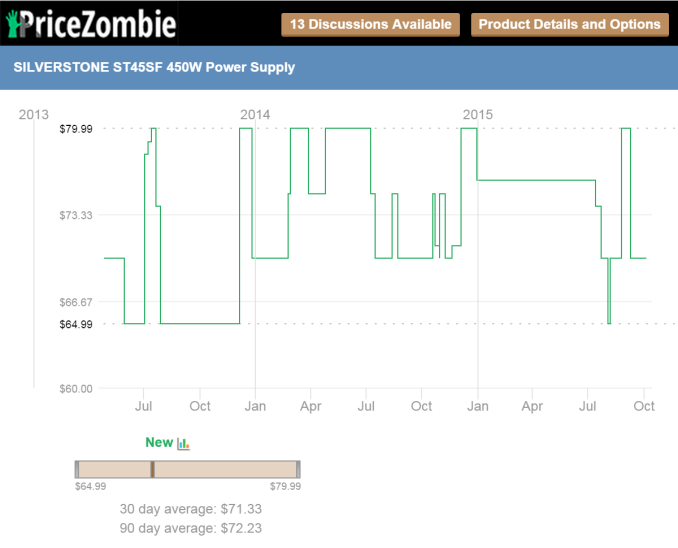
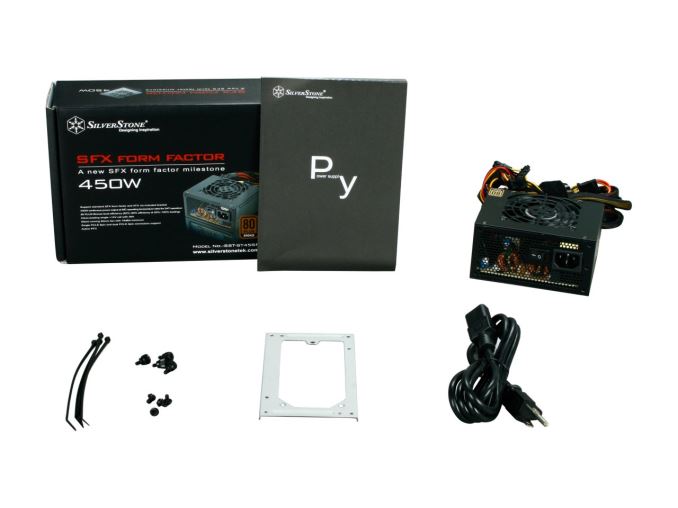
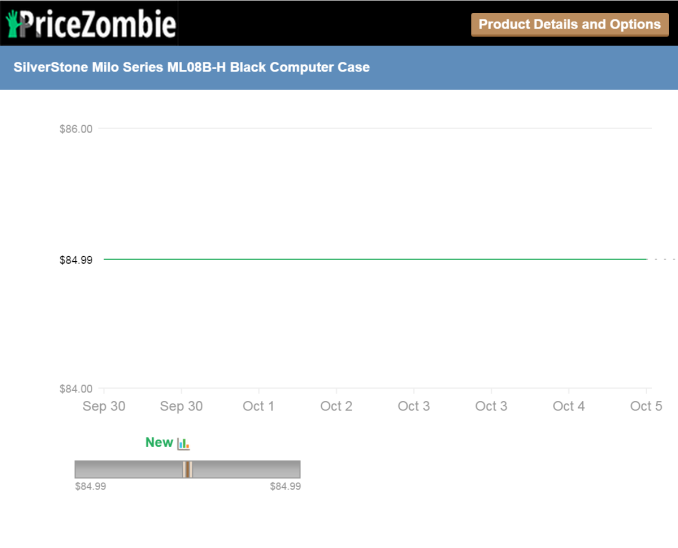
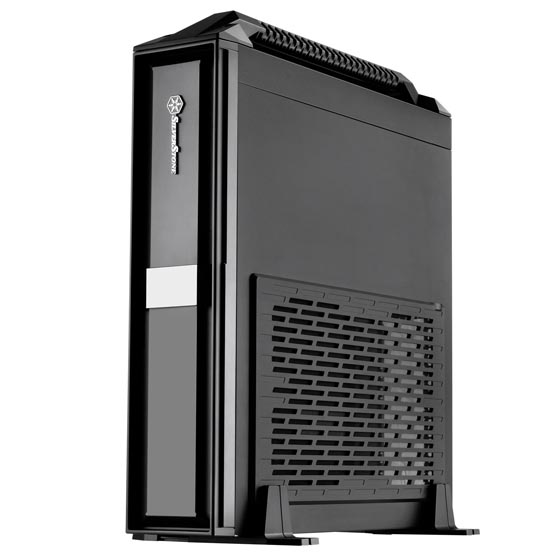

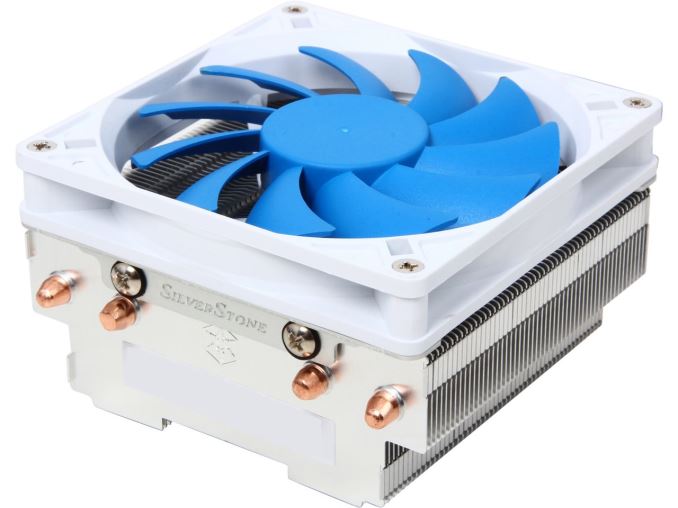
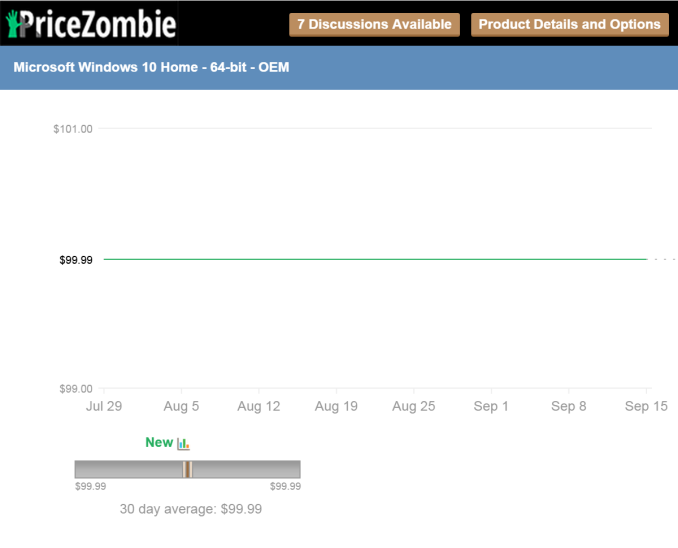
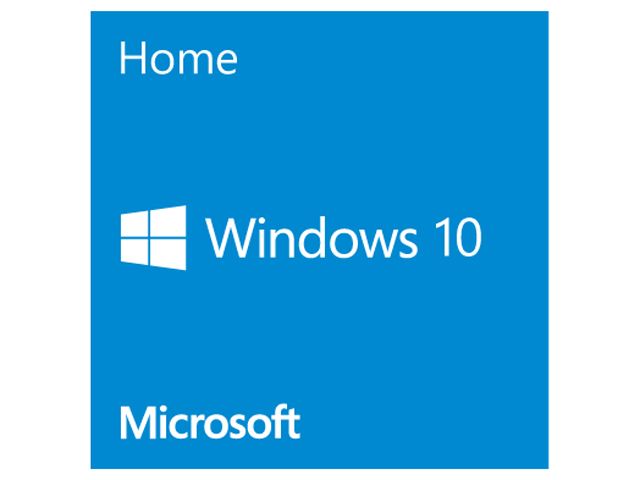








93 Comments
View All Comments
quidpro - Tuesday, October 13, 2015 - link
Links for the Crucial system have url destinations swapped for PSU and Chassisgeniekid - Tuesday, October 13, 2015 - link
Very torn between these two builds!The processors are the most interesting aspect, IMHO. Both are two-core processors but one is Hyperthreading-enabled while the other is known to overlock well. Presumably an overclocked G3258 will be better for games and single threaded applications but I expect the numbers to be quite close. I'm very eager to see the benchmarks.
The GPU difference, on the other hand, is something I predict will be a significant difference. Mid-range GPUs like the 950 GTX and 960 GTX are situated on a steep section of the price-performance curve and spending a little extra here can go a long way. That said, the price difference between the two GPUs here is almost identical to the price difference between the two builds overall so any benefit of the Silverstone build should really be attributed to Milo's higher cost.
Regarding storage, 256 GB SSD on the Crucial is really nice. It wouldn't hold my entire games library but it would probably hold the games I play most often with occasional re-installs to manage the changing nature of "games I play most often".
In the end I think I'm in favor of Silverstone's Milo just because my inner geek is drawn to the G3258. The idea of a build whose value stems from its overclock-ability appeals to me and even more to college me.
CountDown_0 - Tuesday, October 13, 2015 - link
I'd go for the Crucial build, because the CPU is so much better and the SSD is twice as large. The GPU is not much slower, the optical drive still makes sense, Windows 10 would be better but the upgrade is free, so it's still ok.Anyway, I would like to say another thing. The PSUs are ridicolously overkill!!! Both of them! Not just Crucial's one!
The PC I'm using right now is based on Silverstone's RVZ01. I have an i5 4690k (still at stock frequencies), 16 GB of RAM, a 512 GB SSD, an optical drive, and a MSI GTX 960 Gaming G1. Compare these specs with the 2 builds proposed here: my consumption is certainly higher. Well, the PSU I have is Silverstone's 300W ST30SF, and it's even too much - I am playing The Witcher (1) and, thanks to a (admittedly cheap and thus probably not too precise) power meter I have seen a peak of 180W (at the wall! Which means that the DC power it delivers is even lower, let's say 15% less, then it's 153W!). Both these PSUs are REALLY overkill!!
Jumangi - Tuesday, October 13, 2015 - link
At only $800 budget it should be about the internal core complements like the gpu and cpu. The looks of a flashier case don't mean squat if your games run poorly. The crucial build spends way to much on the PSU and case. Can easily save money to get a much better CPU.janisgomez456465 - Wednesday, October 14, 2015 - link
my parents inlaw just got an awesome 12 month old Lexus just by parttime work from a computer. you could look here HomeSalary10.cmjanisgomez456465 - Wednesday, October 14, 2015 - link
my parents inlaw just got an awesome 12 month old Lexus just by parttime work from a computer. you could look here >>>>>>HomeSalary10.cmCliff34 - Wednesday, October 14, 2015 - link
Can i have one suggestion as to the article? Is it possible to show the prices next to the items in the last page where you compare both systems? This will help to gauge where the money is being spent :).Stuka87 - Wednesday, October 14, 2015 - link
Really surprised they both went with nVidia GPUs, they could have both gotten AMDs that were quite a bit fast for that price, or gone with a same speed card with less money. In this price range price should be a very important factor. Both the 950 and 960 are badly over priced cards.Go with an AMD, and then get a better CPU with the residual money.
colonelclaw - Wednesday, October 14, 2015 - link
My take on this challenge would be to drop any gaming aspirations and go for raw computing power and more memory. An integrated CPU/GPU would allow for 16 or 32GB RAM and more/faster storage. The reason for this is interpreting the 'back to school' theme to mean a PC designed for work first and foremost, preferably math/science-based.I would then sneakily give the recipient of said machine a PS4 whilst their parents weren't looking, because downtime is important.
SUpstone - Wednesday, October 14, 2015 - link
Your idea of a budget is different to mine. If the build budget is $800 then that's all there is... you can't spend $812! I've read the rules and I see you allow 3% flex so Silverstone are within your rules... but Crucial could've addressed what seems to be the main criticism and chose a GTX 960 and been within your $824 limit. If you're really struggling to get the budget together, or you're building PCs as a business, then overspends are a no-go.In my experience the core i3 is a sound value for money choice for good productivity / media / games performance. An i5 is nice to have but not necessary. I agree with what many others have said: chose one 500GB SSD and lose the HDD. I'd keep the optical disk drive... for the student who wants to watch movies on the PC monitor pre-owned DVDs may be old skool but will be cheap and easy.